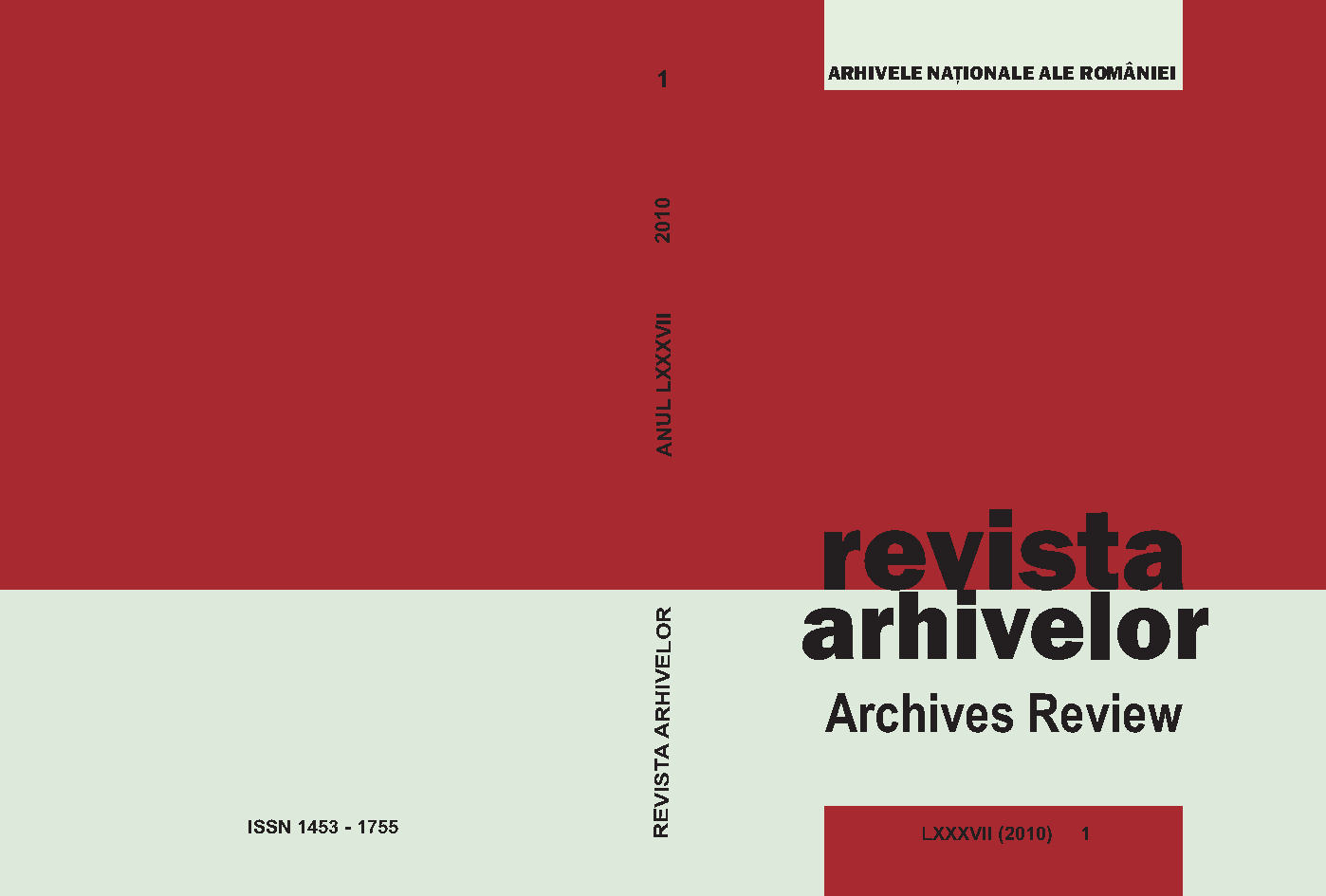Teatrul şi muzica din România în primii ani de comunism (II)*
Theatre and Music of Romania in the First Years of Communism (II). The Music (1945-1960)
Author(s): Gabriel CatalanSubject(s): History, Cultural history, History of Communism
Published by: Arhivele Nationale ale Romaniei
Keywords: cultural history; communist Romania; Romanian music
Summary/Abstract: The Stalinist transformation of the Romanian culture and society was the consequence of the military Russian occupation of the country and of the political actions of the new government led by Romanian Communist Party, who imposed the Soviet model by force, terror and propaganda. The purges of the 1945-1948 and the role of the trade-unions are the best examples.Since 1947/1948 the theatre and the music were under the control of the propaganda section of the Central Committee of the Romanian Communist Party. Also, since 1945 the communist government had a department of culture with directions for each of the two fields.The socialist realism, the Soviet model, the musical art for the masses, the censorship, the anti-cosmopolite campaign, the hearing/audition committees and other constraints of the repertories, the political selection and acquisition of the melodies (from symphonies, chamber music, opera and ballet to folk songs and hits), the composition at order of all kind of music, the long time cultural isolation towards the Western free world and the anti-capitalist system propaganda, all that are ideological achievements of the new communist era, according to the Soviet model.Very few composers, interprets, musical critics and musicians were persecuted and suffered in the communist jails (George Cocea, Dimitrie Cuclin, Dan Mizrahi), some made beforehand the choice to go or to stay in the exile (George Enescu, Dinu Lipatti, Ionel Perlea, Sergiu Celibidache, Marcel Mihalovici, Stan Golestan, Constantin Brăiloiu, Dan Mizrahi, Jean Moscopol), but the greatest majority was represented by collaborators, Party activists and even members of the Nomenklatura, many of them well-known (Matei Socor, Egizio Massini, Alfred Alessandrescu, Hilda Jerea, Sabin Drăgoi, Ion Dumitrescu, Anatol Vieru, Savel Horceag, Laurenţiu Profeta, Alfred Mendelsohn, Mauriciu Vescan, Elly Roman, Gherase Dendrino, Ion Vasilescu, Zeno Vancea, Aurel Giroveanu, Henry Mălineanu, Temistocle Popa, Hary Schwartzmann, Constantin Bugeanu, Diamandi Gheciu, Stelian Dinu, Constantin Palade, Vasile Popovici, Ioan Chirescu, Constantin C. Nottara, Ion (Ivan) Hartulary-Darclée, Kozma Géza, Constantin Marin, Viorel Doboş, Dumitru Botez, Radu Paladi, Achim Stoia, Adalbert Winkler, Norbert Petri, Vasile Timiş, Zaharia Popescu, Vasile Dinicu, Filaret Barbu, Tiberiu Brediceanu, Theodor Rogalski, Gheorghe Dumitrescu, Nicolae Buicliu, Ion Şerfezi, Leon Klepper, Emanoil Ionescu, Mihai Andreesi, Marţian Negrea, Nicolae Chirculescu, George Breazul, Sigismund Toduţă, Paul Constantinescu, Paul Urmuzescu, Mihai Brediceanu, Octavian Lazăr Cosma, Viorel Cosma, Valentin Gheorghiu, Virgil Gheorghiu, Iosif Conta, Ion Voicu, Oleg Danovski, Floria Capsali, Trixy Checais, Pascal Bentoiu, Tudor Ciortea, Max Eisikovits, Tiberiu Olah, Adrian Raţiu, Doru Popovici, Andrei Tudor, George Bălan, Vasile Tomescu, Radu Aldulescu, George Georgescu, Constantin Silvestri, Mihail Andricu, Mihail Jora).Nevertheless, some of them had had an irregular evolution: from the status of political prisoner or persecuted person to that of collaborator and protected intellectual (like Dimitrie Cuclin and Mihail Jora), from a Nazi partner to a Soviet fellow (the case of George Georgescu), or even from a favourite of the communist regime to an enemy and a victim of that system (the case of Mihail Andricu) or a refugee in the Western free world (like Constantin Silvestri).Like all the arts, under communism, the music knew the same totalitarian practices and values that destroyed the open society, the free exchange of (cultural) ideas, the freedom of expression, included composing (writing) and playing, and lay the foundations for the birth of the “new man”.
Journal: Revista Arhivelor
- Issue Year: LXXXVII/2010
- Issue No: 1
- Page Range: 206-235
- Page Count: 30
- Language: Romanian

